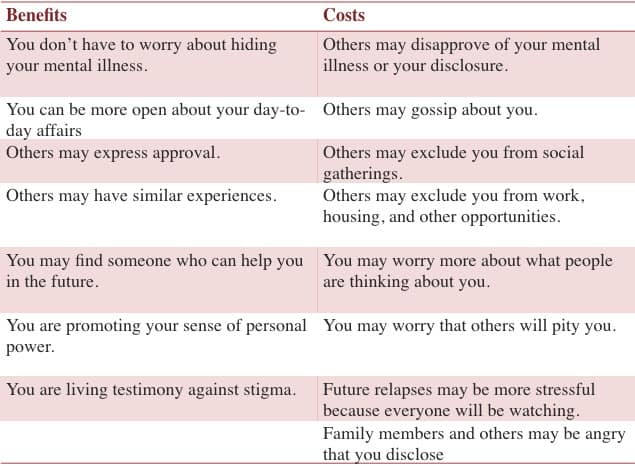Have you ever wondered whether you should disclose your mental health history? Perhaps you want to but did not know how to do so.
In this series, we will walk through a decision making process to help you decide on what to do and some tips on how you may want to do it.
The first thing to do is to make a costs and benefits list. What are the costs or the downsides to disclosure and what are the positive gains you can make from disclosing?
Here are some examples.
What other costs and benefits can you think of? As you are making your list, you may be tempted to judge or evaluate the reasons you are listing as “good reasons” or “bad reasons”. Try to hold off from the evaluation. In this process, the purpose is just to have everything (big or small reasons) you can think of down on paper so you can come to a decision.
Put an asterix besides the ones that seem particularly important to you.
Some people may not be able to make a decision about disclosure after reviewing costs and benefits; you may need to decide to postpone the decision until you feel you are able to.
Maybe you decide to go ahead, but only to certain people whom you are confident are safe people to disclose to. Or maybe you need to take some time to reflect or to discuss with close friends or family members before you are ready to decide. It’s a big decision! Take the time that you need. Disclosure is not a one-time decision. Depending on life circumstances, your interests in disclosing are going to change over time. You may decide today not to disclose, but change your mind in a month.
In the next post, we will talk about the different ways of disclosure and how to decide who to disclose to.
If you are ready to share your story with us, we would love to hear from you! You can click here to submit your story now.





0 Comments